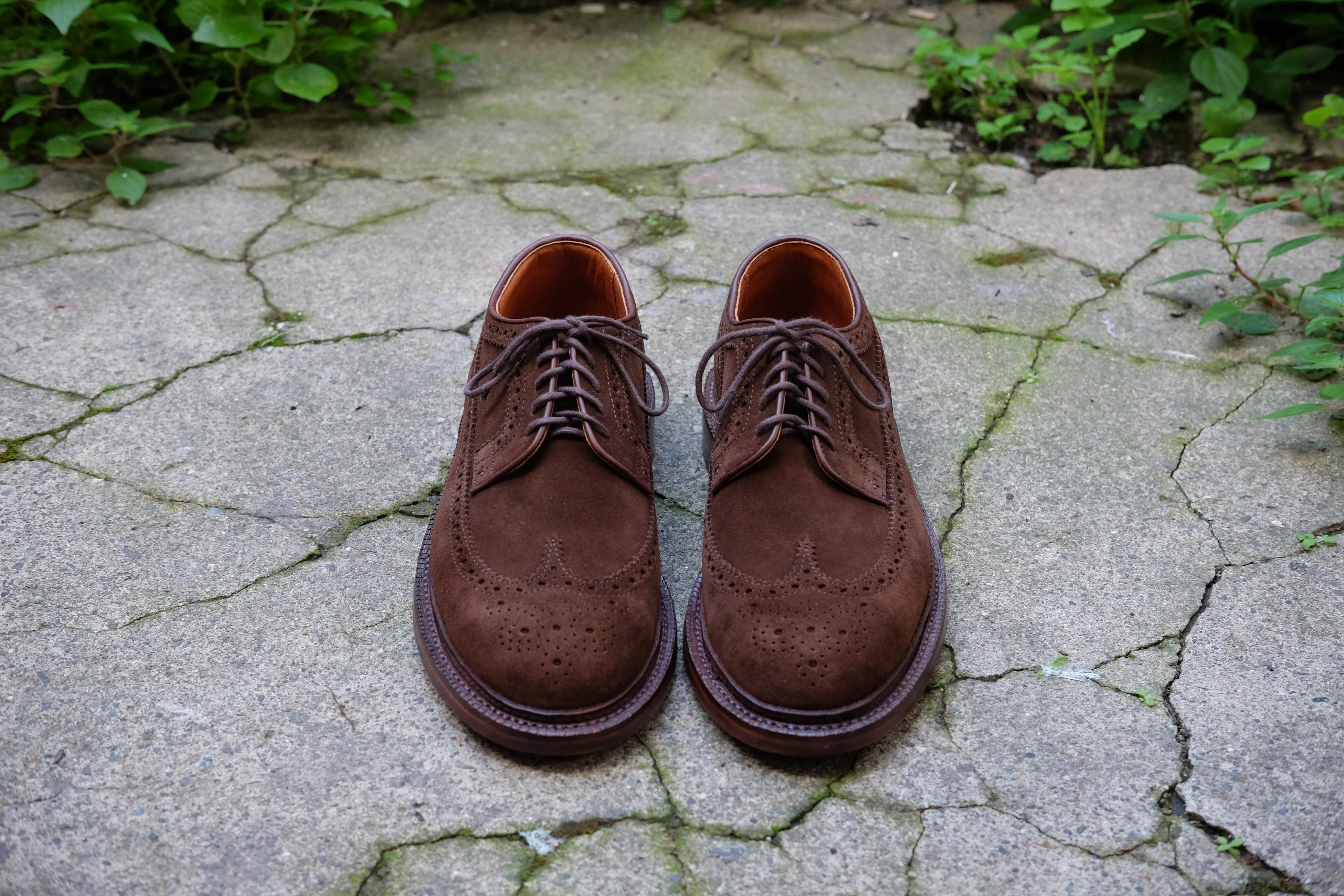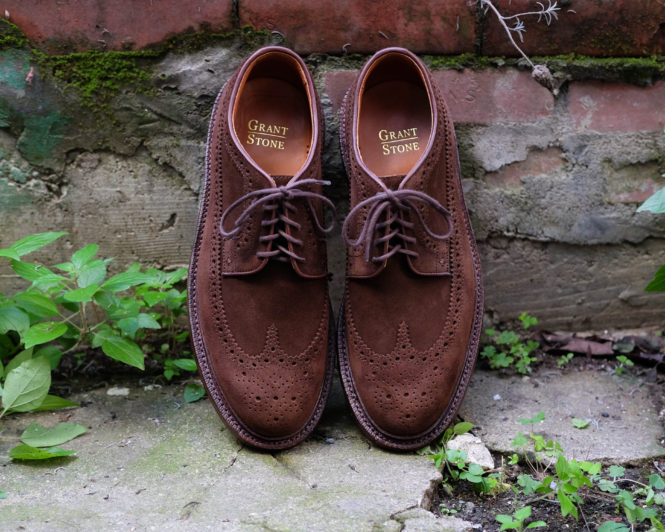I was recently talking with some menswear friends who feel that it’s a tough time to enter the market because everything’s been done already. Products of every style are available at every pricepoint, so what’s left to do? While I agree with this sentiment to a point, I also think that there will always be space at the table for new products if that new product is offering something truly unique for their pricepoint. So while many are saying that the competition among entry-level footwear brands has never been fiercer, Grant Stone has quietly become one of the most intriguing new footwear companies on the market.
What makes Grant Stone so interesting? After all, aren’t there dozens of places where you can buy shoes for around $300-$400? Well, yes, but what sets Grant Stone apart is the even smaller niche within the menswear footwear industry that they’re working to occupy. If you take a look through their catalog, you’ll probably think to yourself – “hey, these look a lot like Aldens, but they’re not as expensive.” And you’d be right. But there’s a little more to it than that, so let me back waaay up.
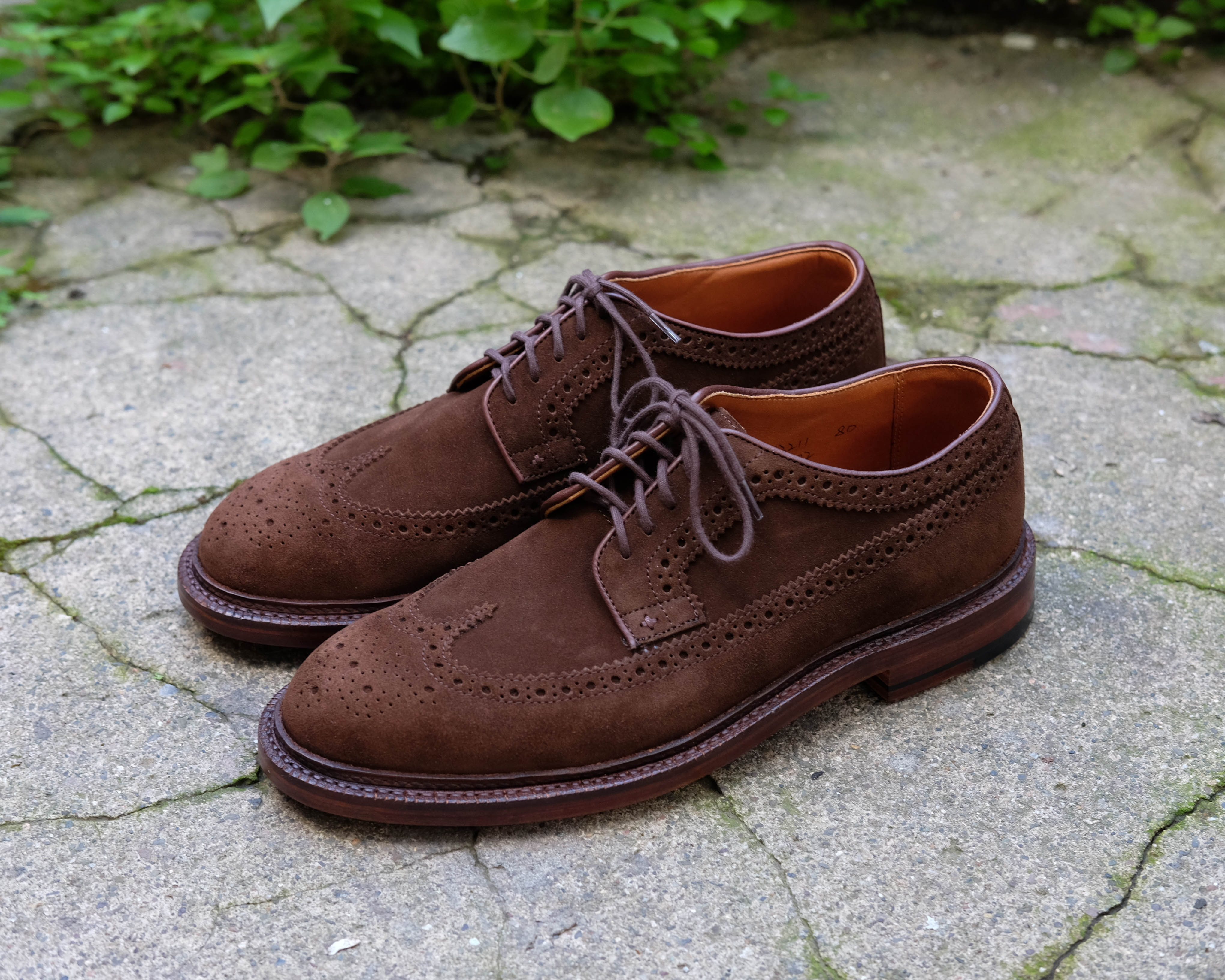
in 1957, a gentleman by the name of Floyd Gilmore started working at Alden as a salesman. While this in itself may not seem that interesting, what is interesting is that Floyd ended up working at Alden for an incredible sixty years (he retired late last year) – it’s safe to say that Floyd probably knows more about Alden than anybody else. I’ve had the pleasure of meeting him a few times, and he always has some great stories to share (my favorite is this one). Floyd’s son Randy also went to work for Alden for many years, and eventually headed to China to work with factories there. Randy’s son Wyatt also went into the footwear industry – seeing the pattern here? – and actually attended the bootmaking school taught by the famed DW Frommer (who I wrote about here). Wyatt went on to intern at a footwear factory in China before starting Grant Stone with his father in 2016.
What I’m driving at here is that (from my perspective) Grant Stone is the culmination of several things – Floyd’s incredible background at Alden, Randy’s production connections in China, and Wyatt’s entrepreneurial drive and hands-on experience. This isn’t a company casually producing Alden knockoffs in China, this is a family that happens to have a deep history in both classic American footwear and Chinese manufacturing, and put those two things together.
So with all that said, let’s get on to the shoes.
I’ve chatted with Wyatt a bit, and he offered to send me a pair of shoes to review. I decided that a longwing would be a great choice because I have several pairs to compare them against (and I think they’re also a very useful style of shoe to have). Grant Stone also offers some boot models as well, but the blucher styles make up the majority of their catalog. I went with the suede style because I love suede shoes and I also prefer when the uppers match the welt color (some of their shoes have contrasting welts).
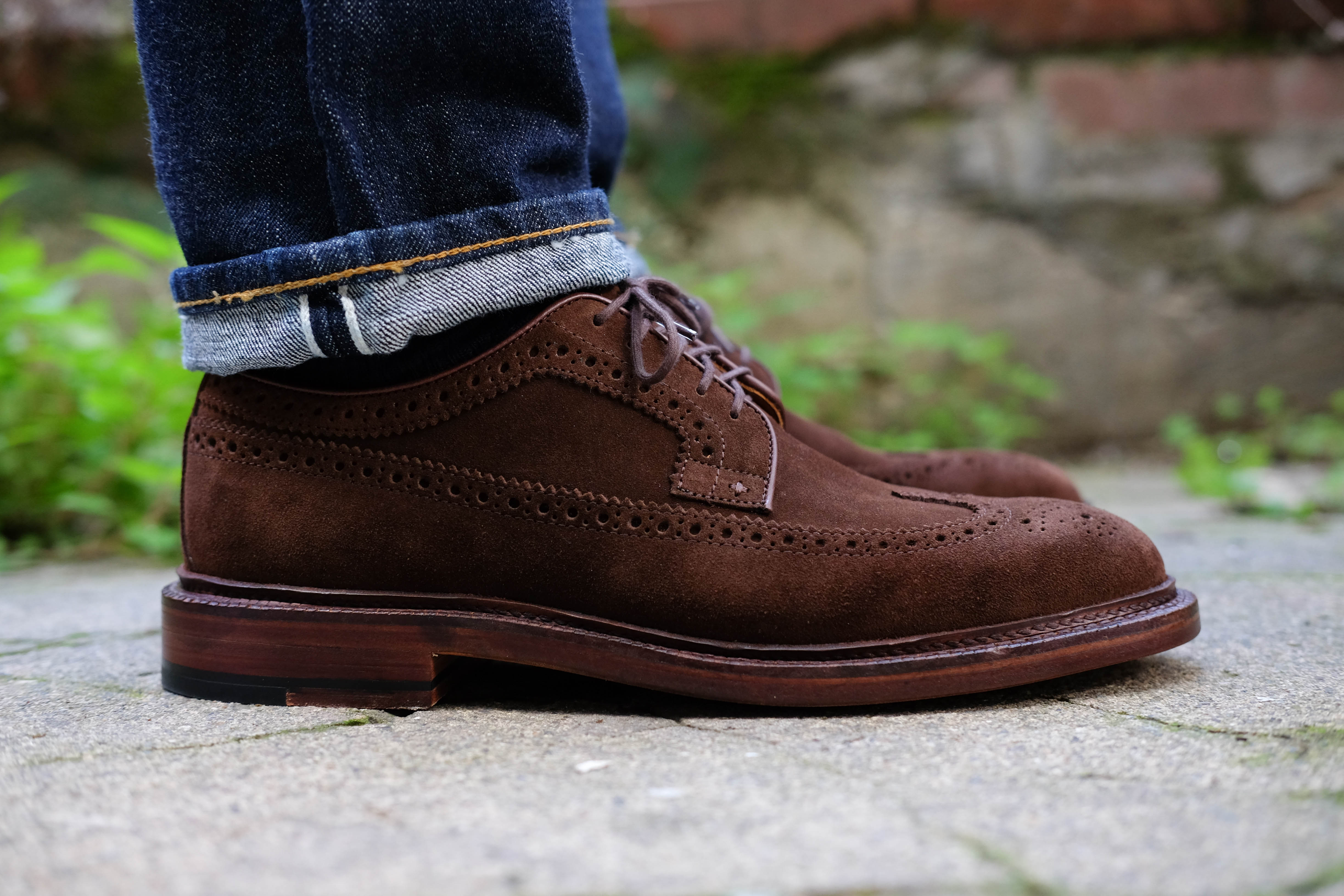
When I pulled these out of the box, my first though was “wow, these shoes are absolute tanks.” Not only were they surprisingly heavy, but they were very sturdy as well. I see this as a good thing for this style of shoe – there’s a reason they were called gunboats, after all. The American-style longwing is a tough, chunky, heavy shoe, and Grant Stone’s construction fits the style well. If my unlined suede plaintoe bluchers by Alden are the equivalent of an unstructured sportcoat by Boglioli, these are a suit by Edward Sexton.
These longwings are made on the company’s “Leo” last, which fits 1/2 size large (like Alden’s popular Barrie last). My Barrie size is 8D (1/2 down from my 8.5D Brannock size) and I took and 8D in these as well. The fit is great, so I would encourage others to also follow their sizing advice. I was slightly concerned that the shoe’s sturdiness would make them tough to break in, but I was pleasantly surprised to find that this was not the case at all. The sturdiness of the shoe made the fit snug and firm, but in a good way (they really hold my feet in place). I had no problems with comfort wearing these right out of the box.
The material used on these is a repello suede from CF Stead, considered by many to be the preeminent tannery for suedes (I used their Janus calf for my Allen Edmonds collaboration). The medium-nap repello suede is soft and comfortable, without being too thin. CF Stead makes softer suedes and tougher suedes, but the repello is a good all-around workhorse. The color is great, too – a nice, deep brown that isn’t too dark. It’s very wearable and easy to pair with other pieces.
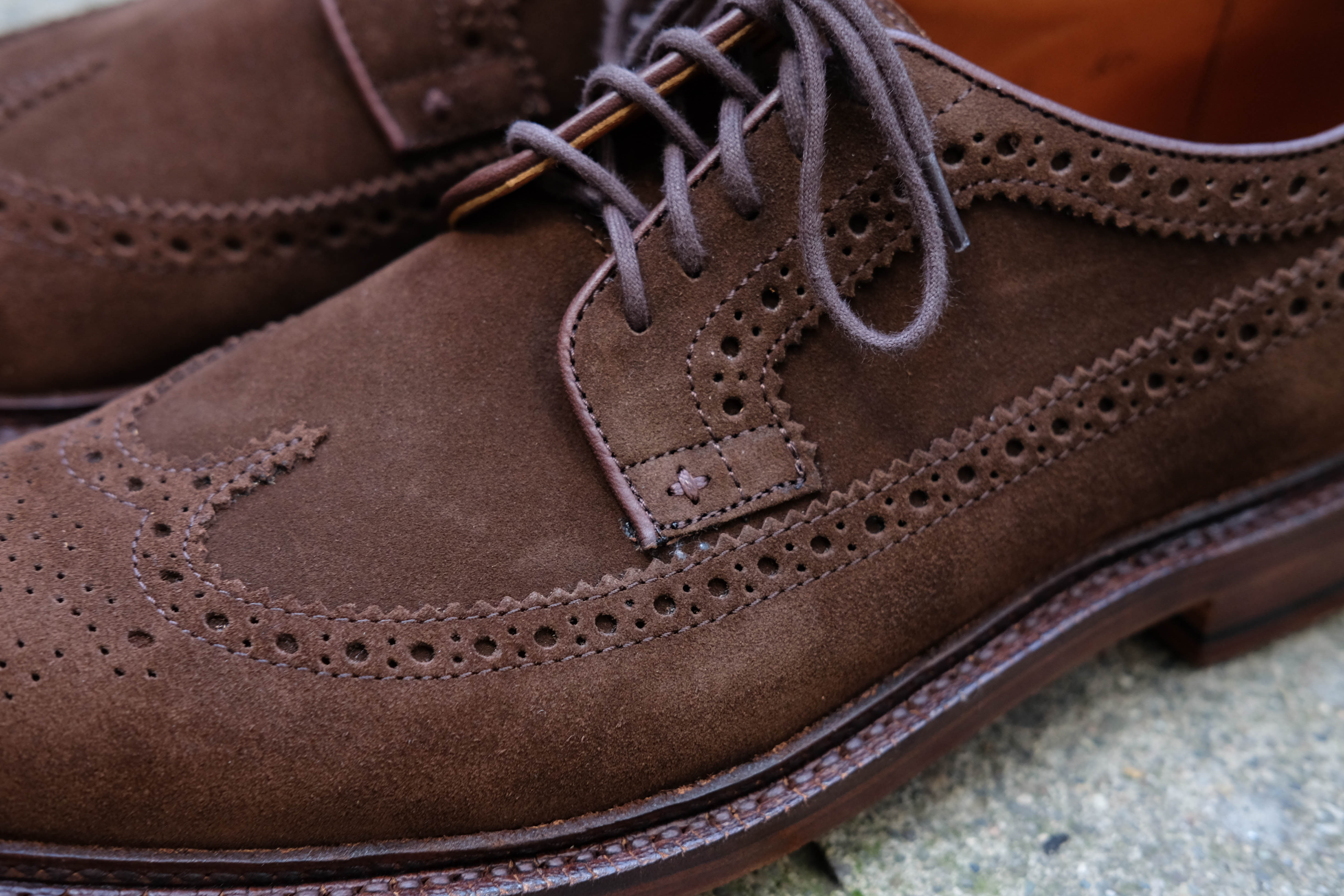
The style of the shoe is very true to the classic longwing – double sole, derby, brogue pattern that extends the length of the shoe, 360 welt, and so on. There is a small decorative cross stitch near the bottom of the eyelet tab as well. I’m not generally one for artistic flourishes, but I think this small detail effectively distinguishes their product from others while not detracting from the design as a whole.
Since I have a substantial longwing collection, I pulled them out to do a quick comparison of last shapes. I’ll do a deeper dive on this topic in the near future, but just wanted to give a quick taste of how the Grant Stone ‘Leo’ last compared to some well-known models.
Below (from left to right) are the Allen Edmonds MacNeil in 8.5D, vintage Florsheim Imperials (the original gunboat) in 8.5D, Alden 979 in 8D, and the Grant Stones in 8D. As you can see, the Leo is perhaps the most voluminous last, slightly rounder than the Barrie. The AE MacNeil – on their 97 last – is the most sleek, with the Florsheim falling somewhere in the middle. There are some minor decorative differences between these models, but they are all very similar patterns (the fact that the Grant Stone pair is in suede makes it look more different than it actually is).
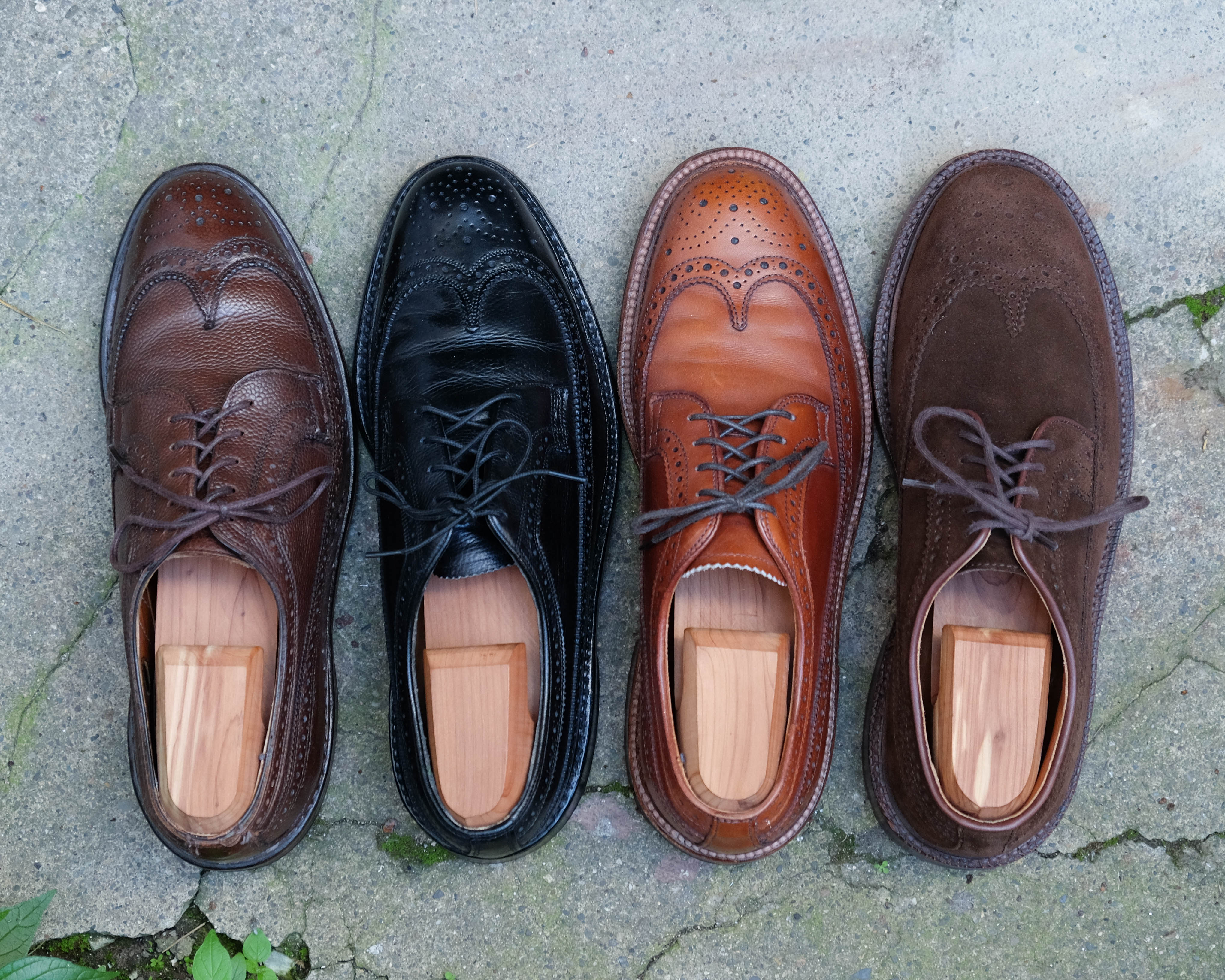
Overall, the finishing on the Grant Stone longwings is quite good. The welt is very well done (the wheeling is particularly nice) and the brouging is clean and precise. I’ve definitely seen shoes from much more renowned companies with much sloppier finishing than what I see on these. Between the quality of the materials used, the good finishing, and the overall sturdiness, I’m fairly confident saying that these should age well (and I’ll try to update down the road when they’ve had more wear).
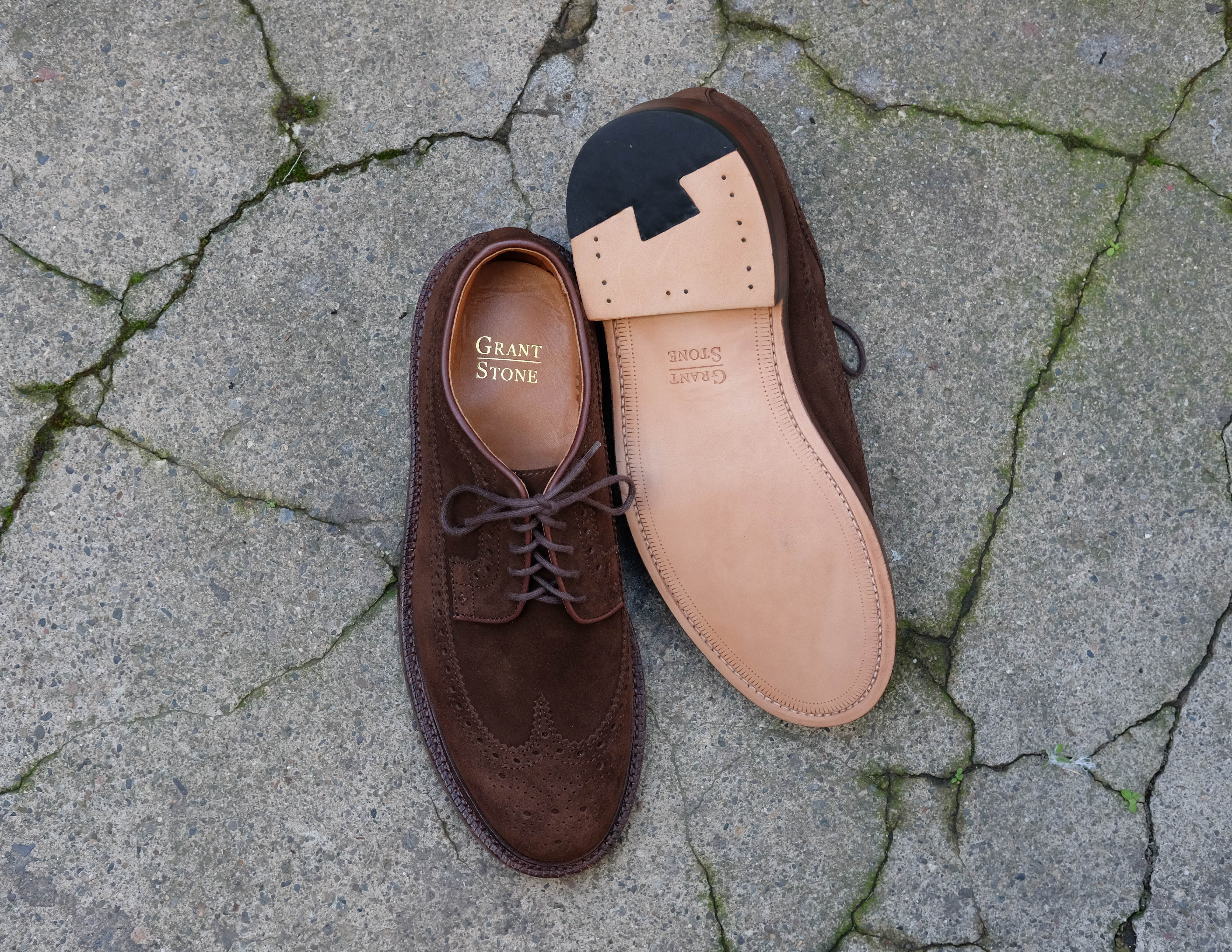
I do have one small critique, but it should be taken with a big grain of salt. To me, the price point seems perhaps a touch high. Not because the product isn’t “worth it” at full price – I think that it is – but simply because they’re a young brand making shoes in China and selling them directly to consumers. This is not to say that Chinese products are inherently less good and therefore worth less, but simply that the cost of producing things is lower there (and the fact that they don’t have to sell to retailers means they can be more flexible with their margins). The $350ish pricepoint can get you shoes from some very storied brands that make shoes in the USA and Europe, so there are definitely other options in that range. Like I said at the beginning of this article, though, nobody is doing quite what these guys are at this price. Overall, these are still a compelling purchase at the current MSRP.
Although their products clearly draw a lot of design cues from Alden, I do think that Grant Stone is offering some things that Alden does not. Not only do they have an effective ecommerce site and web presence, but they also have more flexibility in what they offer and how they operate. Alden’s history makes them fairly rigid in what their product can be, but Grant Stone has the flexibility of a young company that is still able to experiment with their product and try new things. Grant Stone’s product lineup is continuing to expand – they recently added some rubber sole styles, and have more models coming later in the year – so I encourage you to keep an eye out for new releases. I know that I’m looking forward to seeing what they come up with next.
